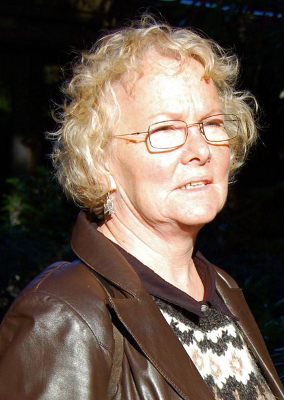Artists Among the Early Icelandic Immigrants
Margaret and Richard Beck Lectures
University of Victoria
Article by Naomi Smedbol and Michael Stevens
October 26, 2008

Artists Among the Early Icelandic Immigrants
was the subject of a recent Beck Lecture the University of Victoria. The speaker was Rósa Kristín Júlíusdóttir, an assistant professor of Art Education at the University of Akureyri. Though it’s a topic worth exploring, it hasn’t received much attention, as we learned. Even if you can Google most things today, you cannot Google much art from the early Icelandic immigrants,
she joked in her introduction. She herself began to investigate this art during her Masters studies some years ago in Finland, at a time when even fewer resources were available. In fact, Rósa had to rely chiefly on the willing participation of the descendants of these immigrants, and those who have collected their works, to flesh out her research. As it turned out, one of these descendants was present in the audience—W.D.Valgardson—so the discussion of the works of Kristín Ketilsdóttir (later Johnson) took on an unexpectedly personal and immediate quality.
Rósa began her lecture proper by requiring her audience to imagine Iceland in 1875. While beautiful, with some fertile valleys and fjords full of fish… Iceland in the nineteenth century was also bleak. Little wonder, then, that people decided to emigrate to the United States and to Canada, away from a place of gnawing hunger, bitter cold, grim pestilence, and baleful oppression
according to Nelson Gerrardʼs Icelandic River Saga, as quoted in her lecture.
When we remember the Icelandic immigrants, we think of them as importing a rich literary tradition, not a tradition of painting or sculpture. Indeed they had no tradition of visual art (i.e. painting) and therefore no common heritage
in that field. Yet, as she argued, the Icelandic people at the time had an innate sense of visual taste.
This visual taste interacted with the reverence for literature and sowed
a love of art among the immigrants, whose lives were by no means leisured and for whose sons and daughters it was difficult to find financial support for art education. Some, however, managed to do so, even some of the women among the second generation of immigrants.
It is this second generation that Rósaʼs lecture was focused on, and the first real representatives of Icelandic-Canadians who were raised in Canada and the United States and still sought education in the arts.
Despite hardship and financial struggle, their desire for self-expression drove them to work especially hard at gaining artistic techniques. She mentioned a plethora of Icelandic artists: Sveinbjörn Sveinbjörnsson, Thordur J. W. Swineburne, Helen Sveinbjörnson, Kristín Ketilsdóttir, Gissur Eliasson, Emile Walters, and Jon Magnus Jonsson. To end her lecture, Rósa emphasized her interest in further pursuing the works of women: Gudrun Bildfell, Helga Johnson, Helga Miller, Carol Feldsted, and Anna Johnson.
Finally, as Rósa remarked, we have to decide how to think about all of these artists’ achievements. To describe them as ethnic artists may be an overstatement. But what did they have in common? Is there a visible thread that ties them together more than other artists among early immigrants? Perhaps not, but they endured and followed their creative spirit. With that they have given us a legacy that, romantically speaking, can be seen as one patch in the North American cultural quilt.
If you’d like to listen to this lecture, which was delivered on 26 October, try the audio version.